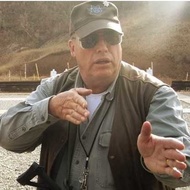13 Aug 19
A brief History of Military “Sniping:”
“Bolt-actions speak louder than words!”
Craig Roberts
Rifleman, taking up concealed positions and firing their rifles, not at ranks of enemy soldiers, but at individual enemy officers and NCOs, have always been regarded with suspicion and disdain by war planners of all nations.
In the black-powder era, such highly-accurate, independent riflemen were considered little more than war criminals, particularly by the British in the American Colonies during our Revolutionary War, a century later in
South Africa during the Boer Wars, again by the British!
When wars ended, “sniper units,” official and unofficial, always reluctantly and embarrassingly acknowledged, were the first to be disbanded and promptly forgotten!
The term, “To Snipe” originated with British soldiers serving in India in the 1700s. Shooting “snipe” (a local game bird) on the ground with rifles was considered great sport, but it was extremely difficult, and successful “Snipers” thus enjoyed celebrity status within their units!
The term stuck and was soon is common use throughout the British Army and among colonial troops around the world. “Sniper” and “Sharpshooter” were used interchangeably.
In the Twentieth Century, sniping slowly became formalized, and officially recognized as a “necessary evil,”among armies of at least the Great Powers.
The advantage of magnifying optics in perceiving downrange detail was obvious nearly as soon as they become generally available.
Optics on “sniper” rifles of WWI and WWII were rarely more than 4x. Some were as little as 2.5x. The elevation adjustment-knob was set-up only for theoretical bullet-drop at various ranges, and thus was not finely adjustable.
Generally accepted range limit for that era of sniping was 300m.
Still, Finnish sniper, Simo Hayha, during the Winter War of 1939-40, was among the most feared in modern history, and yet he used an iron-sighted, bolt-action issue-rifle for the vast majority of his legendary mayhem (along with most of his less-well-known comrades)! In all fairness, Simo probably would have used a magnifying optic, has they been made available.
Most optics of the era were free-moving within their mounts, and zero adjustments were not within the scope, but actually moved the mount itself. Sometimes, even springs were added to return the scope to its starting position within the mount.
Nearly all such “sniper” rifles were permutations of issue, bolt-action, infantry rifles.
“Sniper versions” of autoloaders like the M1 Garand, and later the M14, rifles, all proved unsatisfactory with regard to long-range accuracy. Same with the FAL.
Vietnam-era sniper rifles, starting with the USMC, were civilian bolt-guns (Winchester M70).
Optics were now internally zeroed, with mounts remaining rigid.
Magnification and resolution were much higher, sometimes as high as 24X. Field of view was so narrow that snipers needed to be deployed with a “spotter,” equipped with lower-power binoculars and spotting-scopes.
Moving forward into the current era, “designated marksmen,” using optics of modest magnification (4X-8X), mounted on standard, autoloading infantry rifles, were integrated within their infantry unit and provided on-demand relatively long-range precision capability, as everyone else had rifles equipped with iron sights.
“Snipers,” with bolt-guns and high-magnification optics, along with their spotters, were assigned to entirely separate units of their own.
Today, all infantrymen use autoloading rifles equipped with 4X optics. Iron sights are now gone, as is the separate category of “designated marksman.”
Ordained “sniper teams,” with their specialized equipment and training, continue to be in their own units.
Rounds like the 300WM extend realistic ranges to 1100m. 338 Lapua takes it out to 1500m
In movies, spectacular scenes where enemy combatants are struck in the head via a hidden sniper’s bullet are
complete nonsense, as is most everything else produced in Hollywood!
The job of the military sniper is, and has always been, to manufacture casualties, particularly among enemy command staff, and other vital personnel, and particularly under circumstances where potential targets believe themselves to be “safe!”
Location of wounds on the body is far less important than the fact that the enemy hit is suddenly “combat ineffective,” and everyone else around him is paralyzed, scared to death that they’ll be next!
Modern snipers (like submariners) need to have the appropriate temperament and still require extensive training.
Still largely misunderstood and underappreciated, often by their own commanders, even more so by the public they protect, snipers (like submariners) even today train and operate mostly out of sight!
“People tell me I saved hundreds of people. But, I have to tell you: it’s not the people you saved that you remember.
It’s the ones you couldn’t save.
Those are the ones you talk about.
Those are the faces that stay with you forever.”
Chris Kyle
/John


